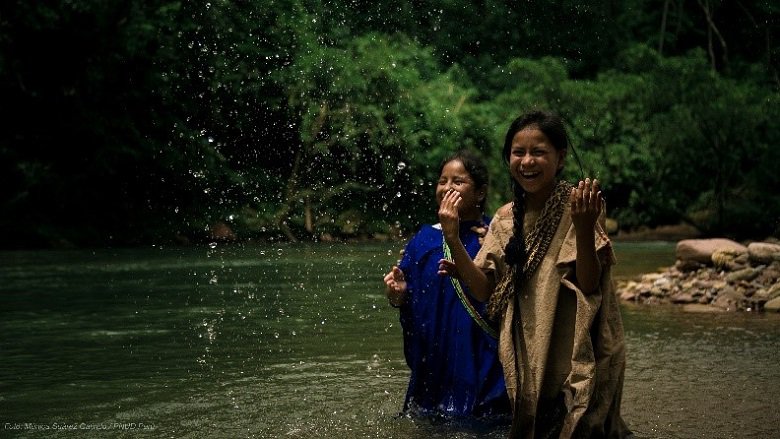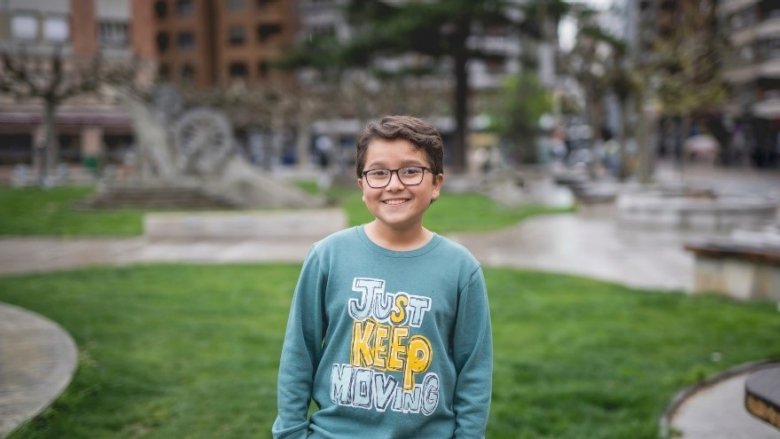Francisco Javier Vera Manzanares may be just 13 years old, but his outspoken passion to protect the environment stretches far beyond his years.

Photo credit: Mónica Suárez Galindo / UNDP Peru
STORY HIGHLIGHTS
- The Amazon Sustainable Landscapes (ASL) program is an initiative to promote conservation and sustainable development of the Amazon in seven countries.
- The ASL is encouraging and incorporating efforts of youth across their programs through activities such as gardening, beekeeping, forest restoration, and environmental education.
- Youth and representatives from ASL teams shared activities and lessons learned to conserve the Amazon in a conversation hosted by the ASL.
People say nature doesn’t have a voice, but it does, we just have to give it a microphone. How does it speak? Through the phenomena of hurricanes and the suffering of our dear Amazon. Humanity is aware of these challenges, so we have to join efforts to…give a voice to nature and listen, to go hand in hand with it, for trees, for life, for this generation.

Photo credit: Jose Marcos
Francisco, a climate change activist in Colombia and the founder of the Guardians for Life movement in Latin America, believes that nature doesn’t have boundaries and that the positive effects of the Amazon stretch to the Sahara Desert and beyond. A special guest from the Colombian Andean region at an event to talk about youth and the Amazon, Francisco is not alone in playing an active role in conservation through collective efforts.
Cesar Antonio Ascate Acosta loves to play soccer, take photos of birds, and make arts and crafts with recycled materials. Living in the Rio Oro homestead, a buffer zone of the Tingo María National Park in Peru, he also has the opportunity to be involved with initiatives created by the Securing the Future of Peru's National Protected Areas project—one of 12 projects of the World Bank-led Amazon Sustainable Landscapes (ASL) program. Those initiatives include special events supported by park rangers in nine schools in the park’s buffer zone, such as workshops with games, sports championships, and art and handicrafts centered around the importance of conserving and protecting the region.
Francisco, Cesar, and other young representatives who participate in activities organized by ASL projects shared their vision, activities and lessons learned in a conversation hosted by the ASL that also showcased the program’s efforts to involve young people in the conservation and sustainable development of communities in the Amazon region. (View presentations and event recording - in Spanish and Portuguese.)
Many of the solutions are already in the Amazon, what we need to do is to listen. It is important for children and youth to have information about the environment; following the UN Convention on the Rights of a Child, children and youngsters have the right to have their voices heard for decisions that impact their lives.

Ana Maria Gonzalez Velosa pointed to the increasing number of young people working to address the climate crisis and biodiversity conservation, for instance, the high-profile effort by Colombian youth in 2018 whose demand for a clean environment led to the Constitutional Court declaring the Colombian Amazon a “subject of rights”, entitled to protection, conservation, maintenance, and restoration. She said promoting day-to-day efforts to include the voices and opinions of youth to bring about tangible benefits requires concrete strategies from governments, civil society, and development agencies.
During the conversation, Leticia Cobello, team member of the ASL project in Brazil from Conservation International (CI)-Brazil, said that up to 40% of the people where their project activities are located are under 18. Because children participate naturally in the field activities as observers joining their parents, the team has found ways to involve them in their conservation efforts when they’re not attending school. For instance, boys and girls have joined their parents in developing native seedlings nurseries that contribute to the local economy and are used in restoration efforts.
Through the support of the ASL’s Heart of the Colombian Amazon project, Corazon de la Amazonia, youth in Guaviare, Colombia, are involved in a variety of activities such as creating gardens and greenhouses, being a part of forest restoration activities, and even conducting research, which encourages youth to see the possibilities for conservation activities.
Nine-year-old Cristofer González, who lives on a farm in San José del Guaviare near the Serranía Chiribiquete National Park in Colombia, explained the process of finding seeds in the forest, rinsing them, selecting seeds to plant in sacks to germinate, and then replanting them in deforested areas. This video (in Spanish) showcases the work being done with greenhouses.
During the conversation, Cristofer provided this advice:
Ask the adults to please stop clearing forests. And those that are out in the forest please take care of the water. Those in the cities: please recycle. To children: we need to plant trees so we can protect the environment.
The ASL’s Colombian Sustainable Amazon for Peace project, works with 12 community organizations supporting sustainable production activities benefiting 775 people—most of whom were victims of conflict or currently in the process of reincorporation. The project works with youth on many fronts, including intergenerational efforts to help protect the connectivity of the jaguar’s territory, an exchange of local experiences between youth and adults on technical and local knowledge through the “farmers’ schools,” beekeeping, and working with children and teachers in educational centers to create awareness of the importance of their territory and its ecology.
Maira Ayala Valencia, 18, lives in the Sabanas del Yarí, located in the rural area of the departments of Meta and Caquetá in Colombia. As part of the ASL project and the Yarí Campesino Promotion initiative, her family works on the conservation and restoration of forests and on sustainable production processes. She has been trained in audiovisual production, photography, and biodiversity monitoring and is also part of the youth group that works to make the Intergenerational Agreement for the conservation of the jaguar in the Yarí Savannas a reality.
Maira said the work has allowed her and other youth to view their region in a different way and the role they can play to safeguard it for the future. This video funded by the project, Yarí Expedition, Stories of a Changing Territory, documents a group of youth from the region who set out to explore and capture their territory on film.
Through this organization and by being able to share this experience, now I am very clear I want to be a biologist. This work has allowed me to clarify my life project.
The ASL is committed to continue involving youth in current and future projects and listening closely to their ideas and solutions for a conserved and protected Amazon.
The Amazon Sustainable Landscapes (ASL) Program is a regional initiative funded by the Global Environment Facility (GEF) and led by the World Bank that supports collaborative efforts in seven countries to improve integrated landscape management and ecosystem conservation in priority areas of the Amazon. The program's approach ensures that national projects can achieve larger impacts by working together under one program than if they were implemented in isolation. This model allows the national project teams and other partners to learn from one another and to become part of a network of institutions and people that coordinate to achieve a common goal, voice concerns, share ideas and best practices, and align efforts to safeguard the future of the Amazon. The ASL program aims to connect people and institutions in order to connect landscapes.
